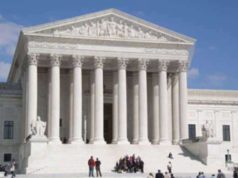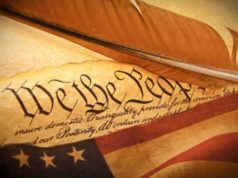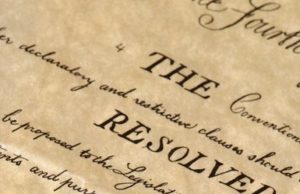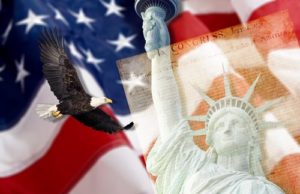
The Declaration of Independence: Implications and Its Influence on the Constitution
The Declaration of Independence, adopted on July 4, 1776, stands as a seminal document in American history. Not only did it proclaim the United States’ independence from British rule, but it also laid out a set of philosophical principles that would have profound implications for the creation of the United States Constitution. In this article, we will explore the implications of the Declaration of Independence and its lasting influence on the Constitution.
1. Assertion of Natural Rights
The Declaration of Independence boldly asserted that all individuals are endowed with unalienable rights, including life, liberty, and the pursuit of happiness. This idea, primarily inspired by Enlightenment philosophers like John Locke, was a cornerstone of the Declaration. It declared that governments derive their just powers from the consent of the governed, emphasizing that the primary purpose of government is to secure these rights.
Implication for the Constitution: The concept of unalienable rights and government’s role in protecting them heavily influenced the Constitution. The Bill of Rights, the first ten amendments to the Constitution, solidified these principles by enshrining individual liberties and limiting the government’s power.
2. Social Contract Theory
The Declaration of Independence also invoked the social contract theory, asserting that when a government becomes destructive of the people’s rights, it is the right and duty of the people to alter or abolish it and establish a new government. This idea of a social contract between the government and the governed emphasized that government authority should be based on the consent and benefit of the governed.
Implication for the Constitution: The Constitution, in its preamble, echoes the social contract theory by emphasizing that it is established by “We the People” to secure the blessings of liberty. This concept underscores the idea that the government exists to serve the interests of the citizens and derives its authority from them.
3. Separation of Powers
While not explicitly stated in the Declaration of Independence, the grievances against King George III highlighted concerns about centralized and unchecked executive power. The framers of the Declaration sought to create a government with a separation of powers to prevent tyranny and abuses of power.
Implication for the Constitution: The Constitution enshrines the separation of powers among the legislative, executive, and judicial branches. This separation is a direct response to the abuses of power outlined in the Declaration and aims to prevent any one branch from accumulating excessive authority.
4. Consent of the Governed
The Declaration of Independence proclaimed that governments derive their just powers from the “consent of the governed.” It reinforced the idea that the legitimacy of government depends on the will of the people and that they have the right to alter or abolish a government that fails to serve their interests.
Implication for the Constitution: The Constitution’s establishment through a constitutional convention and its subsequent ratification by the states exemplified the principle of consent of the governed. It was a deliberate effort to create a government based on the will of the people, further reinforcing the democratic foundation of the United States.
5. Inspiration for Constitutional Values
Lastly, the Declaration of Independence served as an enduring source of inspiration for the framers of the Constitution. The ideals of freedom, equality, and self-determination laid out in the Declaration continued to influence the values embedded in the Constitution.
Implication for the Constitution: The Constitution reflects the spirit and principles of the Declaration, not only in its structure but also in its commitment to safeguarding individual liberties and democratic governance.
In conclusion, the Declaration of Independence was not merely a proclamation of independence but a declaration of enduring principles that would shape the United States’ constitutional framework. Its emphasis on unalienable rights, consent of the governed, and limited government played a pivotal role in the development of the Constitution, which stands as a testament to the enduring legacy of the Declaration’s principles in American democracy.
Authored in 1776, the Declaration of Independence established the United States as a sovereign nation. The content of the Declaration of Independence outlined an ideal process of gubernatorial rule, contrasting that of the British monarchy under King George III. Thomas Jefferson, who is credited with primary authorship, attacked King George III within the text of the Declaration of Independence, claiming that the methodology of British monarchical rule abused and exploited its citizens. As a result of their new-found autonomy, the United States were free to rule themselves.
The ratification of the Declaration of Independence in 1776 was a monumental event. By signing and approving a document that openly criticized the methods employed by their former ruler, the United States had taken the first steps towards establishing themselves as a viable, self-ruling nation. Prior to the Revolutionary War, the Declaration of Independence would have been labeled as a treasonous doctrine. However, in the wake of his defeat, King George III was powerless to react to the criticisms listed in the Declaration of Independence.
The implications of the Declaration of Independence were obvious. The United States were unwilling to recreate a tyrannical monarchical governmental model under which they would be ruled. Thomas Jefferson – with the help of Benjamin Franklin and John Adams – penned the Declaration of Independence with the hopes of instituting a democratic methodology by which a central government would operate.
Though a majority of the citizens of the United States still harbored resentment towards to the British, the Declaration of Independence demanded the humane treatment of all residents of the United States. This included British Loyalists still living in the United States. Not only were all British prisoners required to be freed, but any property that was taken from British Loyalists in an unjust manner was ordered to be returned. By doing so, the authors of the Declaration of Independence set the groundwork for a new nation rooted in liberty and democracy.
The Declaration of Independence set the stage for what would become the Constitution of the United States. By instituting a government whose role was to serve its citizens, the Declaration of Independence quelled any possibility of monarchy returning to the United States. The Declaration of Independence allowed its citizens ‘Life, Liberty, and the Pursuit of Happiness’, and as a result, placed the citizens in a position of power. These irrevocable rights, over which the central government had no control, placed the citizens of the United States in a position of power over the central government.
The Declaration of Independence forged the way for what we now know as democracy. Democratic governmental bodies are elected by the citizens they serve and are subject to removal in the event of any violation or threat of liberty. The Declaration of Independence states that the citizens of the United States allow themselves to be governed by an elected central government, a notion that contrasted their previous rule under King George III.
By criticizing the methodology of the British monarchy, the authors of the Declaration of Independence paved the way for freedom of speech. Though such open criticism of a governmental body would have been considered treasonous prior to the Revolutionary War, the Declaration of Independence aimed to provide the citizens of the United States with an abundance of freedoms.


























